|
SS LEVIATHAN ship
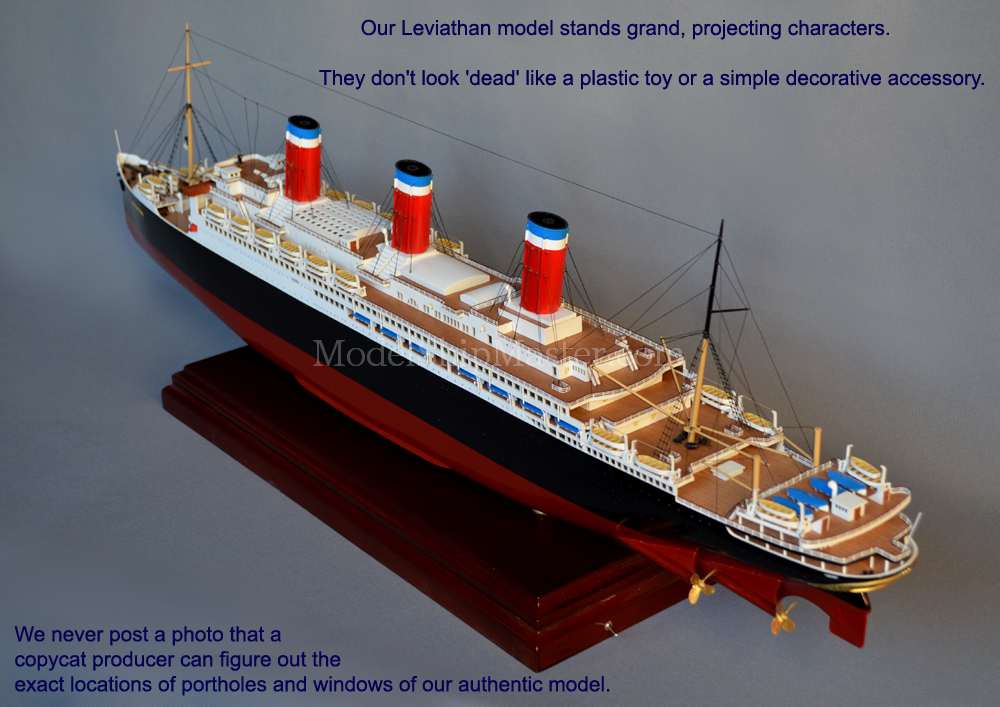
The SS Leviathan
was originally built as Vaterland, the largest ship at
her completion and the second of three sister ships
built for Germany's Hamburg America Line. Less
than a year after her maiden voyage in 1914, World War I forced Vaterland to stay immobile in New York for three years
due to the British dominance of the seas. When the
U.S. entered the war in 1917, Vaterland was seized by
the U.S. government and renamed USS Leviathan.
The USS
Leviathan began regular passages between the U.S. and
Brest, France, delivering up to 14,000 persons on each
trip. She could embarked 11,000 troops in just two
hours. Before the armistice 11 November 1918, she
transported a total of over 119,000 fighting men!
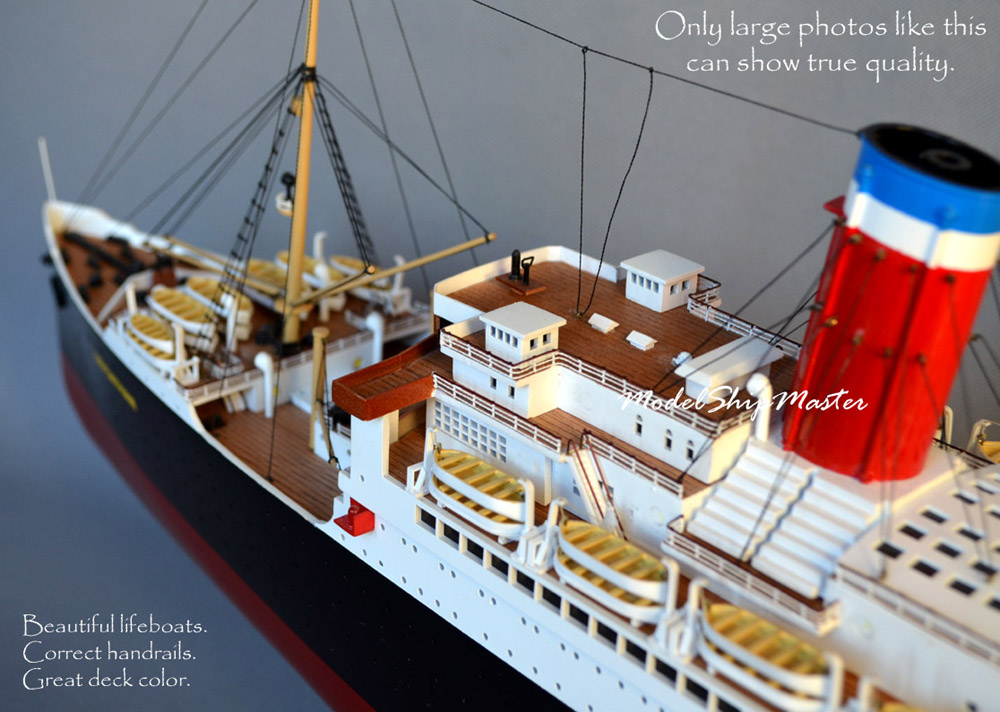
In
December 1919 the International Mercantile Marine signed
an agreement to maintain their intended acquisition of
the ship Leviathan. Gibbs & Cox was hired to survey the
vessel and her economic potential from every aspect. The first big task was the creation of a new set of
blueprints of which none had been received from Germany
under the Versailles Treaty. An army of workers measured
every part of the ship to create the blueprints.
Having languished in
political limbo at her Hoboken pier until April 1922, a
decision was finally made and the $8 million in funds allocated to sail
the SS Leviathan to
Newport News Shipbuilding & Dry Dock Company in Newport
News, Virginia, for her 14-month refurbishment. War duty and age meant that all wiring, plumbing, and
interior layouts were stripped and redesigned while her
hull was strengthened and her engines converted from
coal to oil. Virtually a new ship emerged.
The decorations and fittings, designed by New York
architects Walker & Gillette, retained much of her
prewar splendor of Edwardian, Georgian, Louis XVI styles
now merged with modern 1920s touches. The biggest
deviation was an art deco night club supplanting the
original Verandah Cafe.
The
Leviathan ship immediately proved popular with the American
public in the 20s, starting her career fully booked for
her maiden voyage 4 July 1923. Her passenger
average reached a strong 1,300 by 1926, making her the
#1 traveled ship on the Atlantic.
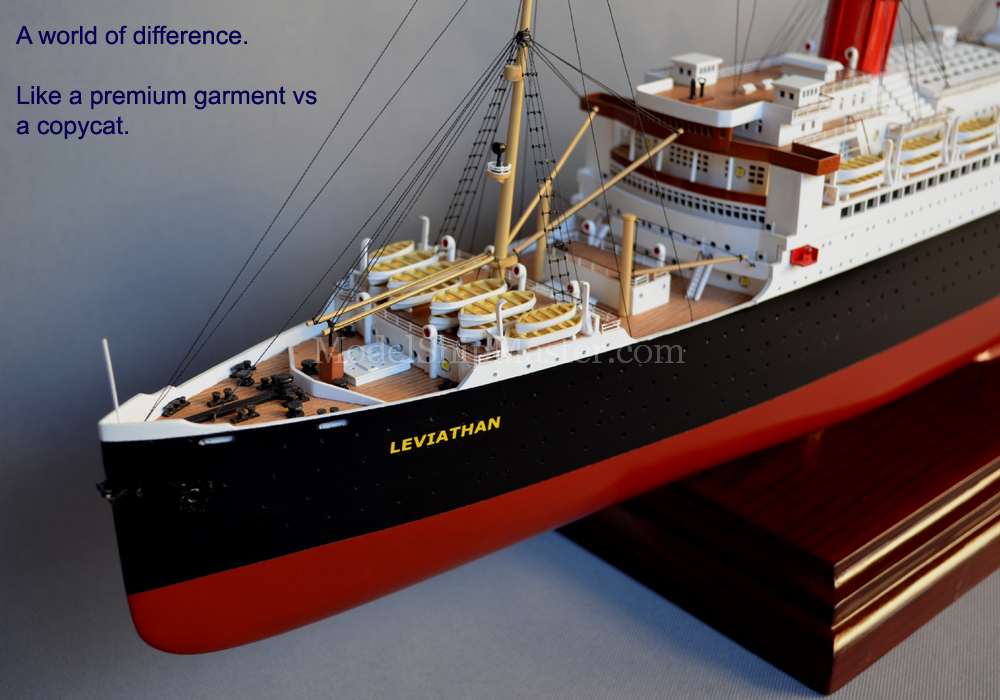
Then the National Prohibition Act of 1924 hit. From 1920 all US registered ships counted as an
extension of US territory, making them “dry ships”
according to the National Prohibition Act. Alcohol-seeking passengers readily chose other liners
instead.
SS
Leviathan was an American symbol of power and prestige. Despite her economic failings, she remained a popular
ship with many loyal travelers. She attracted
attention as the largest and fastest ship in the
American merchant marine and featured in countless
advertisements.
Ship Leviathan
was tough. In one crossing in the winter of 1924,
out of Cherbourg, she cruised through a fierce storm
with 90 ft waves and winds up to 100 mph, at times
forcing her into 20 degree rolls. Eleven portholes
were smashed.
The ship's orchestra, the
SS Leviathan Orchestra under the
direction of Nelson Maples, was also well regarded. Gramophone records were produced in 1923 and 1924 for
Victor Records by the band, which would later become
inspiration for the New Leviathan Oriental Fox-Trot
Orchestra decades later.
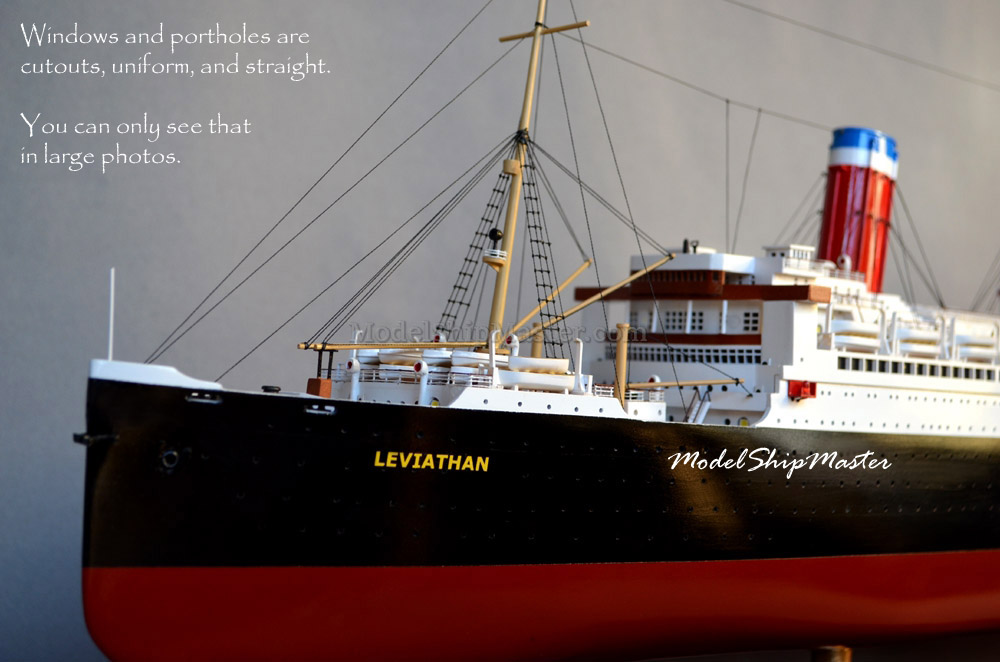
In 1929, the SS Leviathan was finally allowed to serve
“medicinal alcohol” outside US territorial waters to
make her more competitive with foreign lines and was
quickly sent on Booze Cruises to make money. Bottom line was improved but then the Great Depression
came as a death blow: SS Leviathan was laid up at her
pier in Hoboken, New Jersey, in June 1933. She ran a couple more round trips before its
owner paid the U.S. government $500,000 for permission
to retire her while keeping her in running order until
1936.
On 26 January 1938, the Leviathan ship set out on
her 301st and last voyage under the command of Captain
John Binks, retired master of the
RMS Olympic, and a
crew of 125 officers and men to
deliver her to the breakers. She arrived at Rosyth,
Scotland, on 14 February.
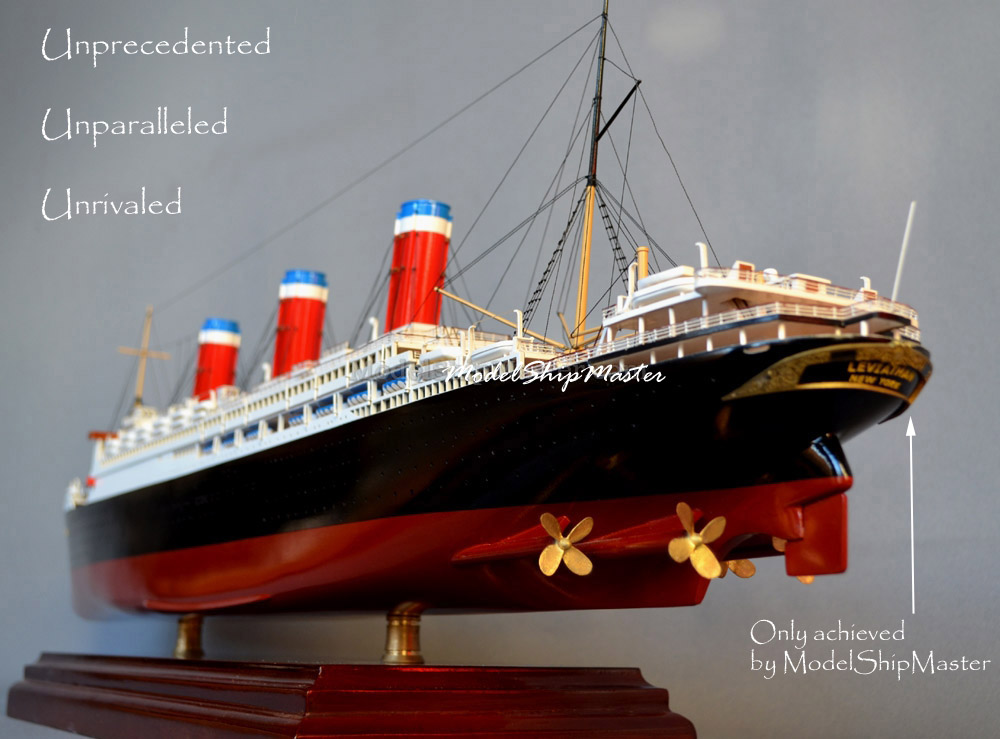
We build this
primarily wood SS Leviathan model the following sizes: 33"
long (1/350 scale)
and 57"
long (1/200 scale).
Model is built per commission only.
We require only a small deposit to start the
process. Please click
here for
more details.
-
Plank-on-frame hull
- Windows and portholes are cutouts (not black decals),
uniform, and on straight lines.
- Captivating
lighting, with and green/red navigation
light that will light up your special evenings. LED light powered by standard 9v
battery for your convenience.
A ship is not an ocean liner without beautiful
lighting.
-
Click
here to learn more about authentic ocean liner
models.
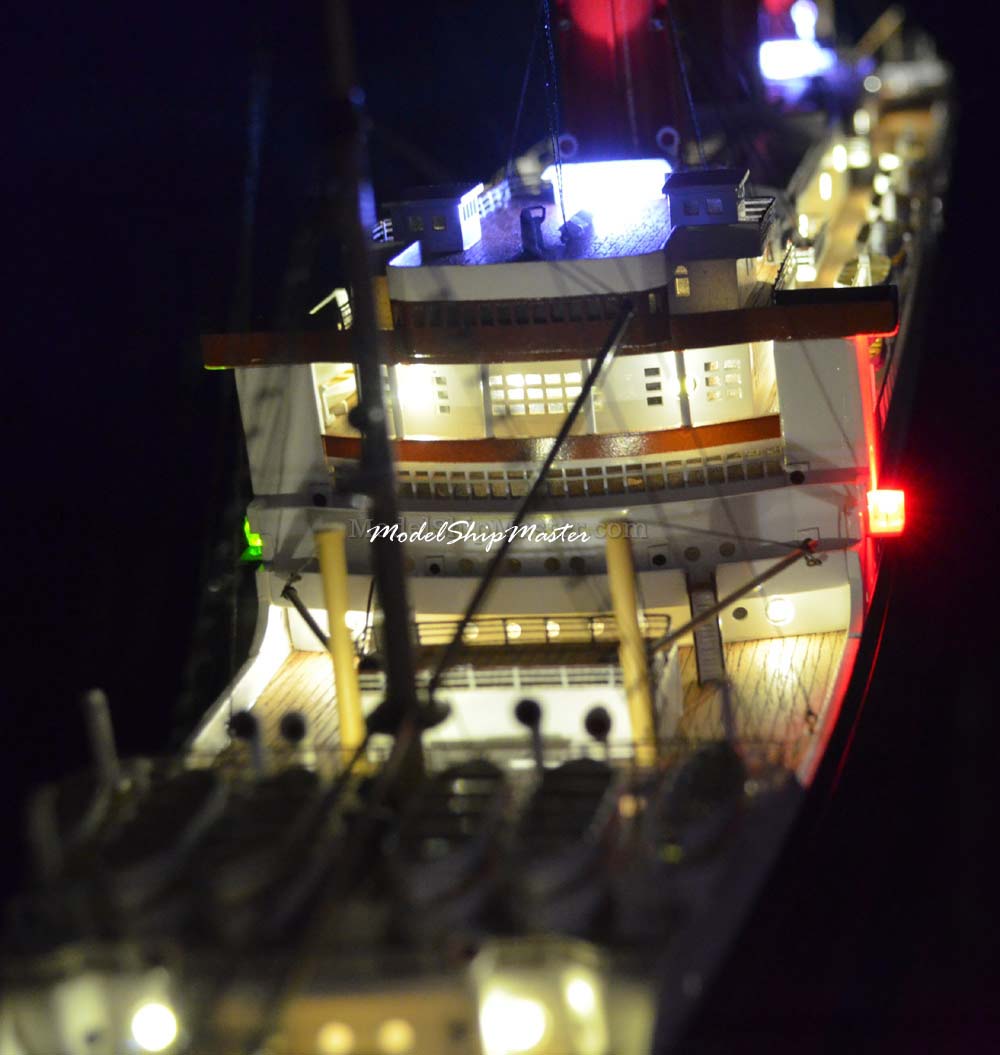
Also be sure to check out our
other beautiful, authentic Italian liners
RMS Majestic model
and RMS
Berengaria model.
Learn more about the
SS Leviathan here:
https://en.wikipedia.org/wiki/SS_Leviathan
|